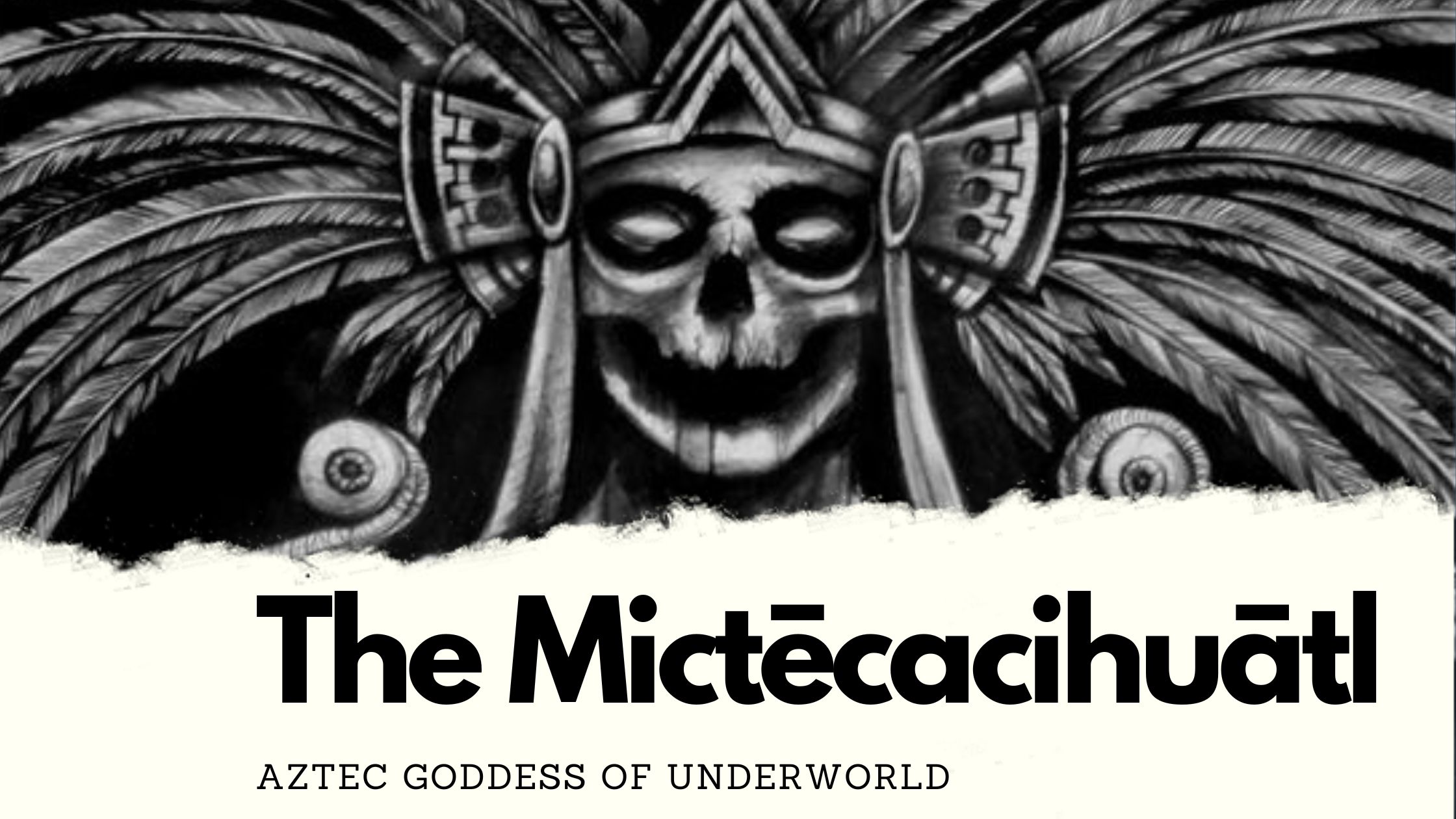 Mictēcacihuātl means “woman of the dead” in the ancient civilization of central Mexico, the Aztecs. Mictecacihuatl and her husband Miclantecuhtl presided over the realm of Mictlan, the underworld’s lowest level, as co-rulers. Mictecacihuatl is tasked in mythology with watching after the graves of the deceased and presiding over funeral celebrations. The current Day of the Dead, which also draws significantly on Spanish Christian traditions, adopted various practices from these celebrations over time.She is also known as the “Lady of the Dead” or “Queen of Mictlan,” which is the name of the Aztec underworld. Mictēcacihuātl is often depicted as a skeletal figure or as a woman with a skull for a head. She is believed to be the guardian of the bones of the dead and is associated with the festival of the Day of the Dead, during which she is honored and remembered. In Aztec mythology, Mictēcacihuātl is the consort of Mictlantecuhtli, the god of the underworld, and together they preside over the realm of the dead.
Mictēcacihuātl means “woman of the dead” in the ancient civilization of central Mexico, the Aztecs. Mictecacihuatl and her husband Miclantecuhtl presided over the realm of Mictlan, the underworld’s lowest level, as co-rulers. Mictecacihuatl is tasked in mythology with watching after the graves of the deceased and presiding over funeral celebrations. The current Day of the Dead, which also draws significantly on Spanish Christian traditions, adopted various practices from these celebrations over time.She is also known as the “Lady of the Dead” or “Queen of Mictlan,” which is the name of the Aztec underworld. Mictēcacihuātl is often depicted as a skeletal figure or as a woman with a skull for a head. She is believed to be the guardian of the bones of the dead and is associated with the festival of the Day of the Dead, during which she is honored and remembered. In Aztec mythology, Mictēcacihuātl is the consort of Mictlantecuhtli, the god of the underworld, and together they preside over the realm of the dead.
The Aztecs, unlike the Mayans, did not have a complex written language. Instead, they used a combination of logographic symbols and phonetic syllable signs, which likely emerged during the Spanish colonial era. Scholarly analysis of these symbols and tales from early colonial times has allowed us to piece together the Maya mythology we know today. Not only so, but many of these traditions have been passed down for generations with relatively minor alterations. The Aztecs probably had a good idea of what to expect from modern Day of the Dead celebrations.
There are many legends about Mictecacihuatl’s spouse, Miclantecuhtl, but not as many about her. Mictēcacihuātl is thought to have sacrificed her as a newborn before marrying her. Collectively, the Mictlan aristocracy ruled over the regular, heroic, and non-heroic souls that resided in the underworld. Mictecacihuatl & MIclantecuhtl are credited in one variant of the tale with bringing back the bones of death to the realm of the living, where they were restored and used to spawn new races. The bones were thrown and mixed up on their passage into the land of a living, which is why there are so many different races today. The recently deceased were often buried with material possessions to appease Mictecacihuatl and Miclantecuhtl and secure their protection in the afterlife.
Mictecacihuatl is commonly depicted with her mouth wide open, suggesting that she can swallow the stars to render them invisible throughout the Day. The Aztecs portrayed Mictecacihuatl as having a skull for a face, a skirt woven from serpents, and drooping breasts. The Aztecs had festivities in honour of a deceased that they believed were supervised by Mictecacihuatl. These were later incorporated into Christian Theology during the Spanish rule of Mesoamerica with relatively few modifications. The Aztec mythological couple Mictecacihuatl & Miclantecuhtl, wife and spouse who control the afterlife, are the inspiration for the modern celebration of the Day of the Dead among the devotedly Christian Hispanic culture in Mexico and Central America, as well as among immigrants from other nations.






